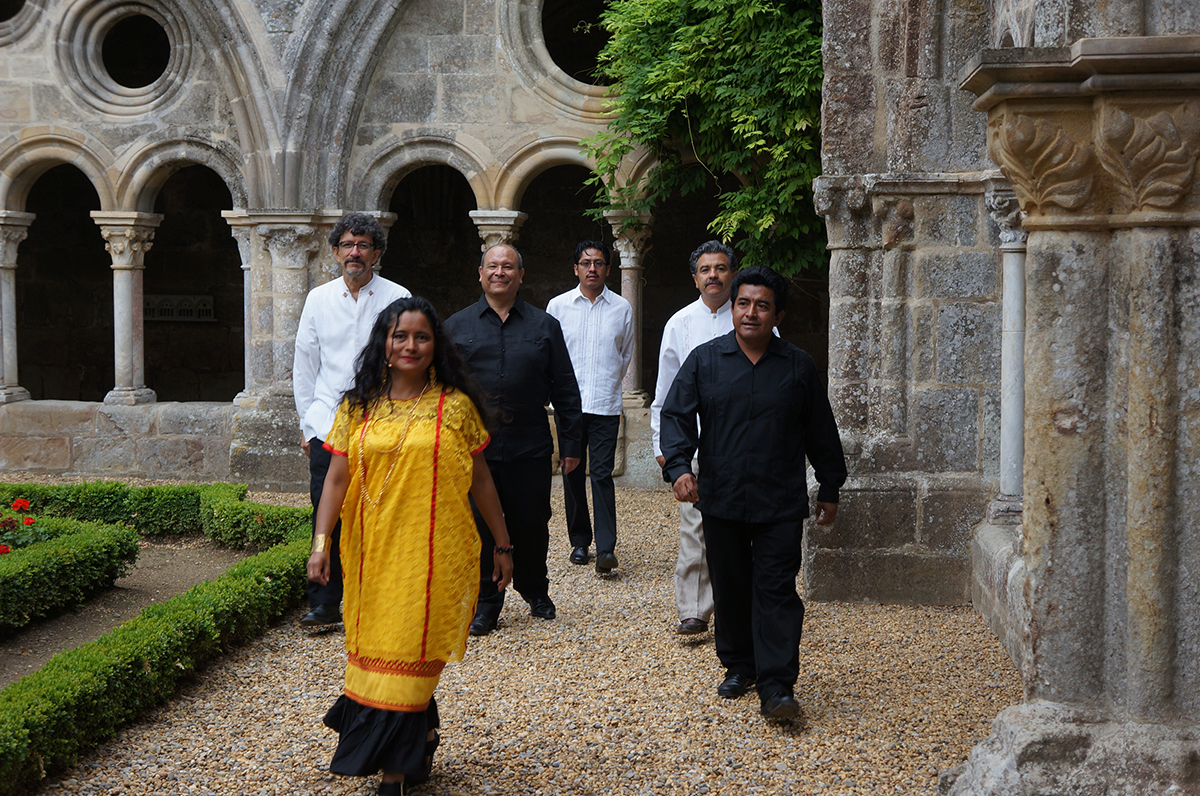Atkinson Forum to explore vibrant Mexican 'son' music
By Daniel Aloi

Performers, scholars and community organizers will explore a musical form that goes back four centuries and continues to connect Mexican-American communities in the United States to their cultural roots, in the 2015 Atkinson Forum in American Studies, Oct. 16-17.
The forum, “Son Jarocho and the Mexican-American Imagination,” will feature Tembembe Ensamble Continuo, a six-member chamber group dedicated to the research, performance and fusion of baroque Hispanic guitar music with Mexican and Latin American traditional music. The ensemble revives the festive Spanish 17th-century fandango and highlights its lineage to a contemporary Mexican music known as son jarocho.
“Since the popularization of Ritchie Valens’ rock’n’roll adaptation of ‘La Bamba’ in 1958, son jarocho has become an increasingly central aspect of Mexican-American cultural life,” said Alejandro L. Madrid, associate professor of musicology and director of this year’s forum.
“For this community, son jarocho works to symbolically reconnect them to their country of origin as well as to express their unique experience as Americans in their new country,” he said. “[The forum] seeks to investigate and reflect on this and other aspects of this emotionally powerful form of music and dance.”
The forum begins and ends with musical events in Sage Chapel.
In “Laberinto de la guitarra/The Guitar’s Labyrinth,” Friday, Oct. 16, at 8 p.m., Tembembe Ensamble Continuo features pieces composed for baroque guitar from Spanish sources, performed side-by-side with traditional Mexican sones. A son jarocho jam session, “Fandango!” is Saturday, Oct. 17, at 8 p.m.
Members of Tembembe Ensamble Continuo joined forces in 1995 while conducting a research project for the National University of Mexico. With fieldwork and oral history interviews with traditional musicians in Veracruz, Mexico, and an exhaustive review of 17th- and 18th-century Hispanic guitar sources, the project traced the origins of Mexican son back to the baroque Hispanic world and explored its evolution as a genre in Mexico.
The group began applying its research results to musical performance in 1998. Part of their name, “Continuo,” refers to the continuity of their music through time, linking past and present. They have established specific connections between Spanish baroque guitar pieces and several regional variants of Mexican sones, including son jarocho and sones de mariachi.
Tembembe members lead a workshop on baroque music and son, Oct. 17 at 9 a.m. in B20 Lincoln Hall.
“The American Experience of Son Jarocho,” an academic symposium Oct. 17 from 1 to 3:30 p.m. in B20 Lincoln Hall, features papers presented by Madrid, who holds degrees in musicology and guitar performance; Elisabeth Le Guin of the University of California, Los Angeles, Micaela Díaz-Sánchez of the University of California, Santa Barbara, and Martha E. Gonzalez of Scripps College.
“Son Jarocho and Community Building,” an organizers’ and artivists’ (artists/activists) roundtable from 4 to 6 p.m., will feature perspectives from communities in Los Angeles, New York City, Chicago and Santa Ana, California, moderated by Sofia A. Villenas, Cornell associate professor of anthropology and education.
All events are free and open to the public. They are sponsored by David R. and Patricia D. Atkinson through the Atkinson Forum in American Studies in collaboration with the Department of Music, co-sponsored by the Latino Studies Program and the Department of Performing and Media Arts, and supported by an Internationalizing the Cornell Curriculum grant administered by the Mario Einaudi Center for International Studies.
Media Contact
Get Cornell news delivered right to your inbox.
Subscribe